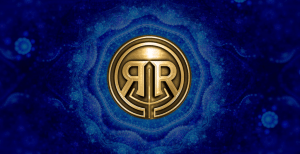Hello Mixed-Up Filers!
Are we in for a treat! A few years ago, I was fortunate enough to meet Stephanie Lurie at a Florida SCBWI conference, as well as take a workshop she was giving. Besides being extremely informative, she couldn’t have been nicer.
If you don’t know her, she’s the Editorial Director of the Rick Riordan Presents imprint at Disney-Hyperion, and I’m thrilled to feature her in the Editor Spotlight!

Hi Stephanie, thanks for joining us today!

JR: You’ve had a long, successful career in publishing. Could you tell us a little bit about your path to becoming an editor, and eventually working for Disney-Hyperion?
SL: Being a children’s book editor was a career choice I made very early on. When I was fifteen, a local bookstore owner asked me to review a book a townsperson had written for young adults. As I read the book, I thought, “Too bad this woman doesn’t know how kids really think.” It was an “aha!” moment for me: I could help authors make their books stronger. I’m not even sure how I knew such a job existed. . . .
I went on to be a creative writing major at Oberlin College, and during the first semester of my senior year, I had an internship for college credit at Dodd, Mead and Company in New York (a publishing house that was ultimately acquired by Thomas Nelson Books). My experience working for a children’s book editor at Dodd, Mead proved to me that I had found my calling. Dodd, Mead offered me a job after college–for a whopping $8,000 a year!–in sales promotion and customer service. I learned a lot, but I wanted to get back to children’s editorial. I jumped over to Little, Brown, where I grew up from editorial assistant to senior editor over twelve years. After that I ran the imprint Simon & Schuster Books for Young Readers for six years. My next stint was as president and publisher of Dutton Children’s books at Penguin. In my ninth year there, a friend of mine who was working at Disney Hyperion talked me into applying for an editorial director job by saying, “How would you like to do what you are doing at Dutton but not have any other imprints competing for marketing and publicity attention?” That sounded pretty good to me, and over the past decade there I have enjoyed being part of a boutique publisher within a huge entertainment company.
JR: That’s some exciting journey! What was the first book you worked on?
SL: I had a generous boss at Little, Brown who allowed me to “cut my teeth” on manuscripts by their top authors at the time, such as Lois Duncan, Ellen Conford, and Matt Christopher. One of the first authors I acquired was Neal Shusterman, who has gone on to be a New York Times bestseller and a National Book Award winner with other editors.

JR: When you first saw The Lightning Thief, what about it appealed to you so much?
SL: Rick Riordan’s first middle grade novel, The Lightning Thief, was acquired at auction before my time at Disney. Rick chose to go with Miramax Books, which eventually became part of Disney-Hyperion. Jennifer Besser (now at Macmillan) edited the Percy Jackson and the Olympians series. I took over as Rick’s editor after she left, picking up on the Kane Chronicles trilogy. I was amazed by how he made ancient Egyptian mythology relevant to modern readers with exciting adventure, relatable characters, a healthy dose of humor, and a breakneck pace. He makes it look easy.

JR: What’s changed in publishing between the time you started and now?
SL: What hasn’t? I’m so old (How old are you?), I pre-date office computers! Yes, we had to type on Selectrics, using carbon paper. The biggest changes have come from: corporate buy-outs of family-owned companies, which necessitated more attention to the bottom line; the rise of chain bookstores; the Harry Potter phenomenon, which brought hardcover fiction back from the brink of death; the importance of social media in author promotion; Amazon’s dominance; and today, more focus on diversity.

JR: I grew up doing all my reports on typewriters. Slightly easier now. And by the way, I could’ve sworn I heard Gene Rayburn say the “I’m so old” part before you answered (How old are you?) But back to the interview. Disney has recently acquired a lot of new properties. Does that mean anything for the publishing division?
SL: Disney now encompasses several premiere brands, such as Pixar, Marvel, Star Wars, and Fox Entertainment. We can publish against all of these brands, from straight movie tie-ins to extension books that tell new stories based on the characters from the movies. It also means that there is more opportunity for intercompany synergy for authors writing their own IP (intellectual property).

JR: What do you enjoy the most about your job?
SL: I’m having a blast helping Rick curate the Rick Riordan Presents line of middle grade fiction by under-represented authors who want to write stories about their own cultures’ folklore and mythology. I send him submissions to consider, acquire the projects we agree on, edit the manuscripts, and collaborate with my colleagues on book design and promotion.
JR: All that sounds like a tremendous amount of fun. What sort of books do you look for?
SL: For Rick Riordan Presents, we want the same qualities that make Rick’s own books so popular, because the imprint was created to satisfy his fans’ craving for adventure based on mythology. We look for a funny, snarky teenage voice; a fast pace; an exciting, high-stakes plot; and a likeable but flawed protagonist who grows over the course of the story.
JR: The kinds of books I love! Are you very hands-on with your authors?
SL: I’ve always enjoyed helping writers bring out their story by asking pointed questions and making suggestions to improve logic, flow, and clarity. For the Rick Riordan Presents authors, my guidance may be a bit more involved, because there is a certain flavor we are trying to achieve while retaining the author’s own voice. It’s a delicate balance.
JR: What’s the state of publishing right now, in particular, Middle Grade?
SL: It can be difficult for a book—any book—to break out in this time when there is so much entertainment content for consumers to choose from and there are fewer retail outlets for print. Amazon is grabbing more and more market share, but the online site doesn’t encourage browsing. Buyers who shop there usually go already knowing what they want. This is part of the reason best-selling authors remain best-selling authors and new authors have trouble competing. Authors need to partner more with their publisher on promotion as a result.
JR: Probably more important than ever for authors to get involved in the promotion process. What advice can you give to authors?
SL: The best way to learn to write is to read, read, read, and write, write, write.
Remember that you are communicating with an audience and not just writing to satisfy your own ego.
A good concept isn’t enough by itself. Write the entire manuscript.
You may have to land a literary agent before you can land a publishing deal.
Choosing an agent and editor/publisher is like choosing any partner. Make sure there is good chemistry between you.
Be open to feedback but stand up for what is important to you.
Don’t expect the publication of your book to satisfy all your desires or change your life.
Writing the book is only 50% of the work; promotion after publication is the other 50%.
School visits are still one of the best ways to build word-of-mouth.
Support other authors on your way up, and they will (should) do the same for you.
JR: All of that is outstanding advice. In my experience, many authors have been extremely supportive of each other. I think strong relationships are extremely important in that regard. I read that Harriet the Spy was one of your favorite childhood books. I have a few friends who wholeheartedly agree with you. What did you love about it and what other books were among your favorites?
SL: I loved how honest Harriet the Spy was about a kid’s real life—I believe it was one of the first contemporary middle grade novels ever published. To this day I enjoy books in which a well-meaning main character makes a big mistake that causes them humiliation, e.g. The Truth About Jellyfish by Ali Benjamin. As a kid I also enjoyed animal-based fantasies such as Stuart Little and The Trumpet of the Swan by E.B. White, and The Mouse and the Motorcycle by Beverly Cleary. High fantasies such as The Chronicles of Narnia and Lord of the Rings stood out, too.

JR: The Narnia books were also among my favorites as a child. Speaking of childhood, what’s one thing from your childhood that you wish could come back?
SL: My fun-loving dad. He taught me to always remain a kid at heart.
JR: Okay, that answer hit me. If there’s one thing I could wish for from then, it would also be to see my dad. How can people follow you on social media?
SL: For publishing news and comments, Twitter is probably the best bet: @SOLurie.
JR: Before we go, is there anything else that you’d like to add?
SL: Thank you for inviting me to answer these questions. I greatly admire authors—both aspiring and published—and wish everyone a fulfilling journey. Your book could be the one that makes a reluctant reader a forever reader, changes a kid’s perspective, and inspires someone else to be a writer.
JR: Extremely true. Thank you again for taking the time to speak with us today!
Well, that’s it for now, Mixed-Up Filers. I’d like to once again thank Stephanie Lurie for joining us! And if you ever see her listed to speak at a conference, I strongly suggest you go listen!
Until next time . . .












